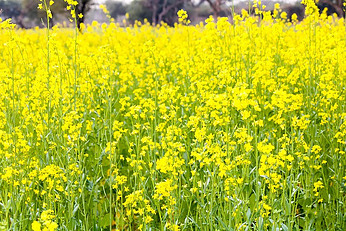Sowing our flower beds with plant cover in autumn is highly recommended. In this way, we obtain all the benefits of green manure. For the fertility of garden beds, it is best that they are never empty, not even in autumn and winter. If we sow them with selected plants that quickly outgrow them, we improve their fertility and eliminate many problems. They represent a kind of living mulch, and those that flower attracts pollinators and give them medicinal properties.
An excellent book, “The Soul of Soil: A Soil-Building Guide for Master Gardeners and Farmers, 4th Edition,” provides all the answers you need about how to condition the soil in your garden.
Which Plants Are Suitable for Green Manure?
On empty beds, weather influences carry away and wash away the fertile soil as it is exposed to precipitation and wind. They also harm the microorganisms in the soil that take care of fertility. Therefore, it is recommended to sow them with green manure plants (another term is green fallow). These plants are not sown for yield but to enrich the soil. They affect it with their secretions, overgrown roots, and aerial parts, which we will bury in the ground when they are green or frozen.
Suitable plants for green manure are plants that germinate and grow quickly and produce a lot of leaf mass. We choose them according to the time of sowing. Most often, cruciferous vegetables are used (oil radish, oil rape, white mustard), phacelia, buckwheat, winter cereals, selected types of clover, their mixtures or crops that are otherwise sown in the garden for consumption (spinach, winter radicchio, which we will cut a little of them for consumption, and most of them will be buried in the ground in the spring).
Until the middle of September, it is still reasonable to sow blue phacelia, oil radish, oil rape, white mustard, fodder canola, rye, buttercups (clover and alfalfa, lupine), and if we hurry, even buckwheat. Their seeds are available for sale in garden centers, also in smaller quantities for green manure in gardens. For the sowing of all except the legume, pea, or bean family, which bind nitrogen to the roots, the soil should first be fertilized with compost and loosened. We will dig all the plants into the ground in early spring or before we need them, and those that have not frozen will be mowed beforehand.
Benefits of Green Manure
Protects the soil and microorganisms: Since the ground is covered all the time, it is less exposed to being washed away by precipitation and wind. The microorganisms that break down organic matter into nutrients are also more protected.
Loosens the soil: Many green manure plants have very deep roots that loosen the soil. Repeated green fertilization greatly improves the structure of heavy and lumpy soils.
Fewer pests, diseases, and weeds: All listed cruciferous root exudates reduce the number of nematodes in the soil, nasturtium mulch limits fungal disease problems in the garden (unsuitable for sowing in early autumn), while buckwheat root exudates harm annual weeds.
They fertilize the soil with nitrogen: Fabaceae (all clovers, lupins, as well as legumes that are grown for food) enrich the soil with nitrogen, which is one of the three most essential plant nutrients. Bacteria that bind this element from the air stay on their roots.
They increase the soil fertility: Since the whole plants for green fertilization will be cut or frozen later and buried in the ground, we will thereby introduce organic matter into it, which the soil animals will process into humus. The microorganisms will then turn them into nutrients for the vegetables.
